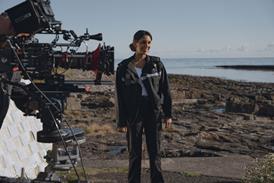For 3D presentation, two identical sets of images need to be -produced - one for each eye. These are displayed either alternately or at an angle to create a 3D effect.
Martin Parsons, head of imaging at facility MPC, said: '[With 3D post] for every colour grade or visual effect you create for one eye you need to do the same with the other. The issue is matching both sets automatically, keeping both jobs running in parallel. You also need to be able to view material in 3D without equipping every compositor with special glasses.'
At IBC next month, Quantel is previewing a 3D stereoscopic post system working with simultaneous full-quality stereo streams on both its iQ and Pablo workstations. Quantel collaborated with Vince Pace, who co-developed the Fusion 3D camera system with director James Cameron.
German firm Iridas will unveil DualStream at IBC, a software addition to its SpeedGrade system for 3D imaging, while US developer Assimilate will demonstrate its £50,000 Scratch system, used to create the new concert film U2 3D.
It allows users to work with left and right channels together as one, in a 'normal' post process.
Although 3D production has yet to be posted in the UK, the creative heads of all the major visual effects post houses are understood be looking at these tools.
More US feature films are being made in 3D and manufacturers such as Philips are developing 3D technology for TV sets.

























No comments yet